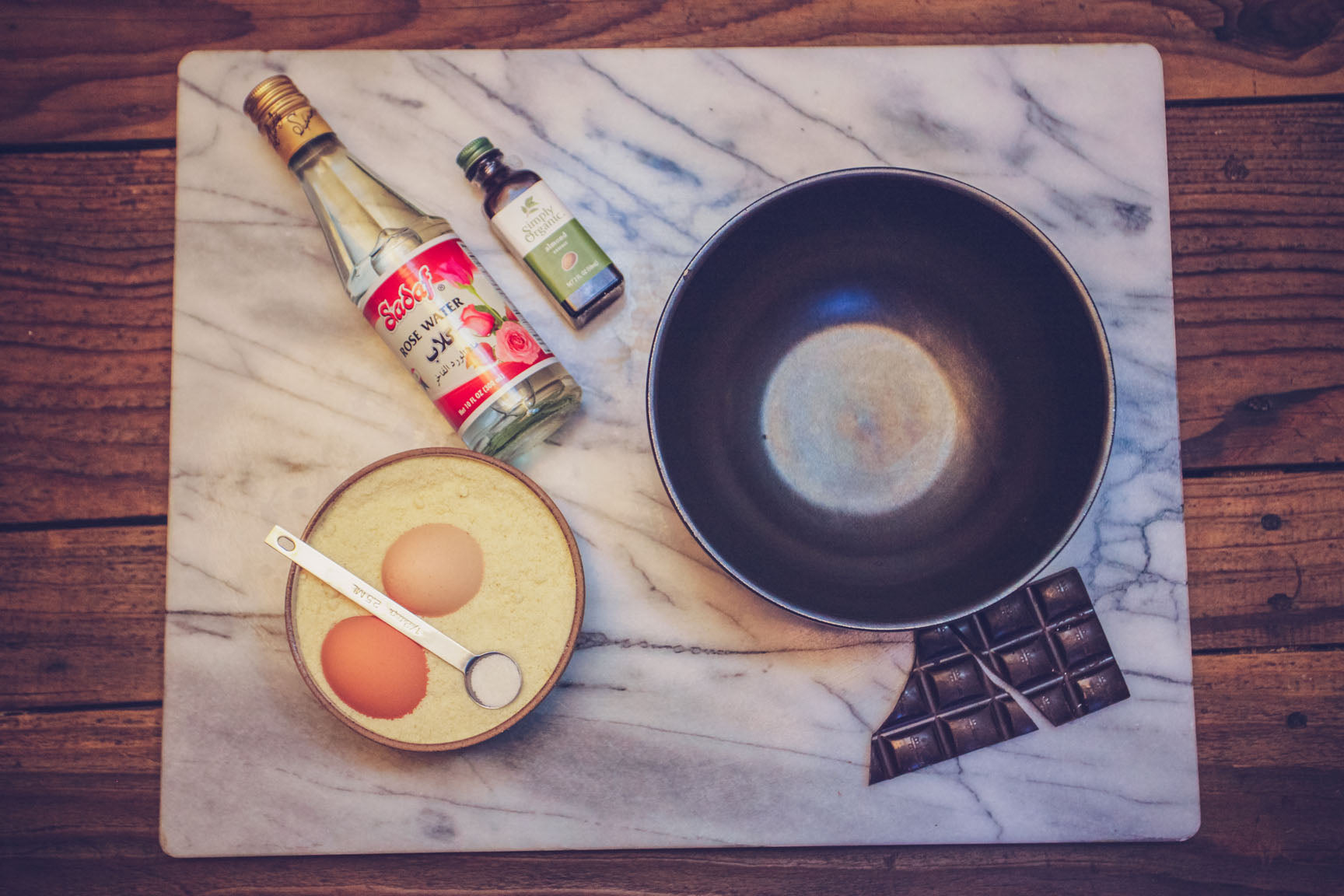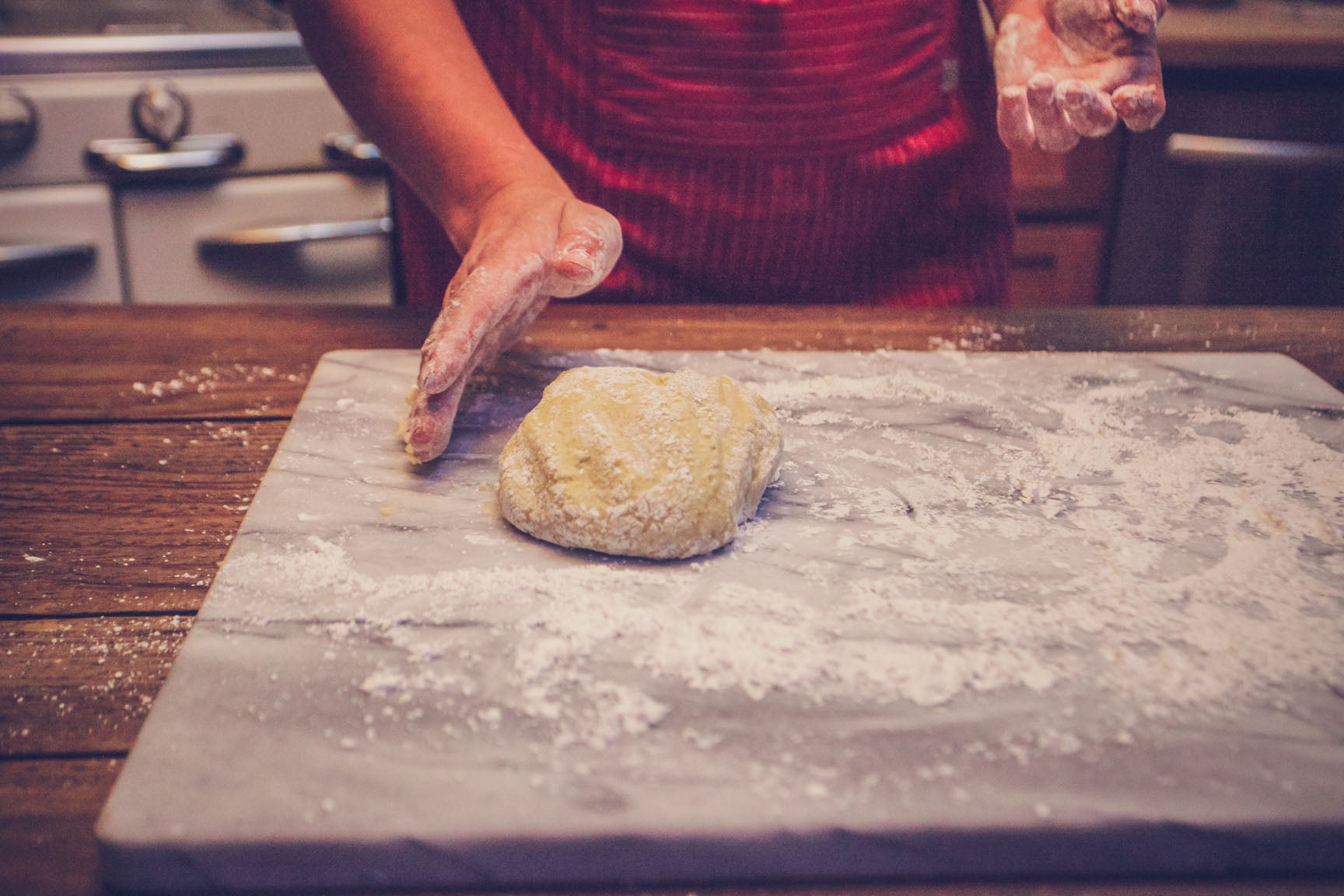- Continue Shopping
- Your Cart is Empty
Homemade Marzipan

What You'll Need
Ingredients
- measuring cups and spoons
- 1 large and 1 small mixing bowl
- whisk
- clean, smooth work surface
- plastic wrap or an airtight container
Ingredients
- 2 cups confectioners sugar
- 1/2 lb super fine ground blanched almonds (almond flour will do)
- 1/2 tsp salt
- 2 egg whites
- 1/2 tsp rose water or orange blossom water
- 1/2 tsp almond extract
- Optional: melted chocolate
- Optional: coconut oil
Made primarily of almonds and sugar, marzipan is a traditional dessert of many diaparate cultures. Originating in what is now modern-day Iran, marzipan was introduced to Europe during the Crusades and became a specialty of many European countries. The flower water is an optional ingredient, but a worthwhile one; the small amount of flower essence highlights the delicacy of the almond flavor without overwhelming it.
Marzipan is often rolled into thin sheets and used as icing on cakes, or dipped in chocolate and eaten as a holiday candy. Its extraordinary pliability also means that it has been used to make edible sculptures, often in the shape of birds, fruits, or vegetables. No less a master than Leonardo DaVinci used marzipan as a medium for expression; he is reputed to have been quite put out when the intricate marzipan sculptures he had created for the Milanese court were eaten, rather than being admired. "I have observed with pain," he wrote, "that my signor Ludovico and his court gobble up all the sculptures I give them, right to the last morsel, and now I am determined to find other means that do not taste as good, so that my works may survive.” The quotation above is from his Notes on Cuisine, written about 1470. How long Leonardo might have expected a combination of nuts and sugar to survive is debatable, but personally, I must side with the Milanese nobles in this case. Marzipan is that good.
Directions
In a large bowl, combine sugar, ground almonds, and salt. Separate the egg yolks from the whites, reserving whites.
Separate the egg yolks from the whites, reserving whites.
Whisk almond extract and rose water into egg whites.

Add egg whites to almond mixture and mix well.
Lightly sprinkle a work surface with powdered sugar or cornstarch.
 Knead the marzipan together until it has a cohesive texture that does not readily stick to the surface. Too much-powdered sugar will make the finished product too dry, so be careful to work in only as much as you need to bring the almond paste together.
Knead the marzipan together until it has a cohesive texture that does not readily stick to the surface. Too much-powdered sugar will make the finished product too dry, so be careful to work in only as much as you need to bring the almond paste together.
Shape the marzipan into a log and seal it in plastic wrap or an airtight container... Allow it to cure in the refrigerator for at least 24 hours.

To serve, we like to roll the marzipan into small balls and dip them into melted chocolate for a decadent holiday confection. Remove the marzipan from the refrigerator and cut into portions.
 Roll each portion into a bite-sized ball.
Roll each portion into a bite-sized ball.  Melt some chocolate in a small saucepan. A little bit of coconut oil added to the chocolate may help it coat more evenly.
Melt some chocolate in a small saucepan. A little bit of coconut oil added to the chocolate may help it coat more evenly.  Place a marzipan ball on a toothpick or fork and dip into the melted chocolate halfway up the side.
Place a marzipan ball on a toothpick or fork and dip into the melted chocolate halfway up the side.  Set to dry on parchment paper and then store in an airtight container.
Set to dry on parchment paper and then store in an airtight container.
Over to You
It’s part of our mission here at Mountain Feed to help you make delicious, sustainable, homemade food more often. Stop by and say hello on Facebook, Twitter, Instagram or Pinterest. Or, as always, you can do it the old-fashioned way and come by the store to speak with one of our in-house experts.
